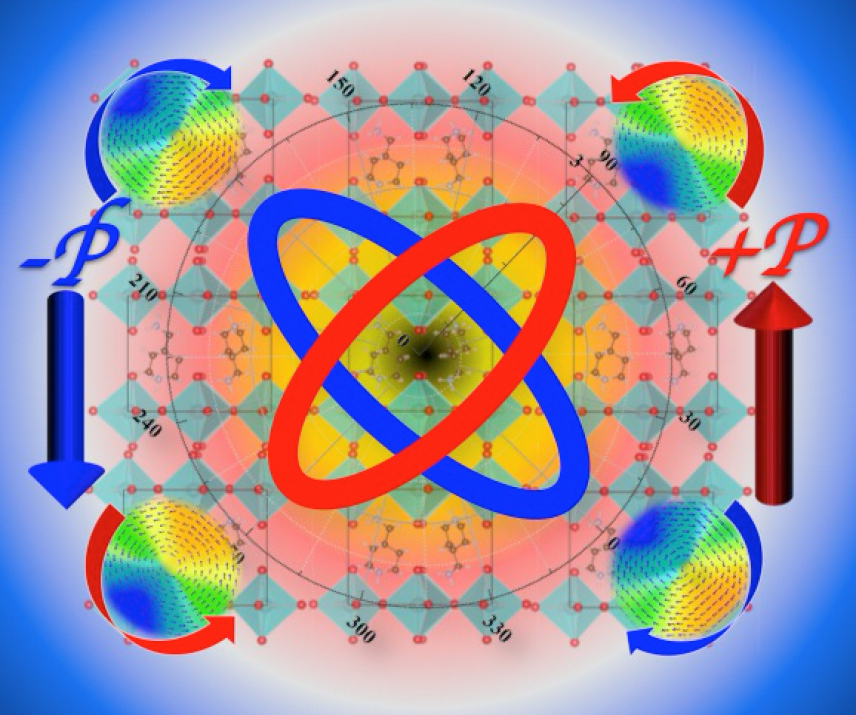An international collaboration between Alessandro Stroppa (CNR-SPIN), Fei Wang, Coen de Graaf, Josep M. Poblet (Universitat Rovira i Virgili, Spain), Heng Gao (Institute of Physics, Chinese Academy of Sciences) and Branton J. Campbell (Brigham Young University, USA) focused on 2D hybrid perovskites.
Hybrid organic-inorganic perovskites (HOIPs) are introducing new directions in the photovoltaic materials landscape. The coexistence of inversion symmetry breaking and spin-orbit interactions play a key role in their optoelectronic properties. We perform a detailed study on a recently synthesized ferroelectric layered HOIP, (AMP)PbI4 (AMP = 4-aminomethyl-piperidinium). The calculated polarization and Rashba parameter are in excellent agreement with experimental values.
We report a striking new effect, i.e., an extraordinarily large Rashba anisotropy that is tunable by ferroelectric polarization: as polarization is reversed, not only the spin texture chirality is inverted, but also the major and minor axes of the Rashba anisotropy ellipse in k-space are interchanged – a pseudo rotation. A k∙p model Hamiltonian and symmetry-mode analysis reveal a quadrilinear coupling between the cation-rotation modes responsible for the Rashba ellipse pseudo-rotation, the framework rotation, and the polarization. These findings may provide new avenues for spin-optoelectronic devices such as spin valves or spin FETs.
For reference: “Switchable Rashba Anisotropy in Layered Hybrid Organic-Inorganic Perovskite by Hybrid Improper Ferroelectricity”, Fei Wang, Heng Gao, Coen de Graaf, Josep M. Poblet, Branton J. Campbell & Alessandro Stroppa, in npj Computational Materials volume 6, Article number: 183 (2020), see https://rdcu.be/cbEnd.


